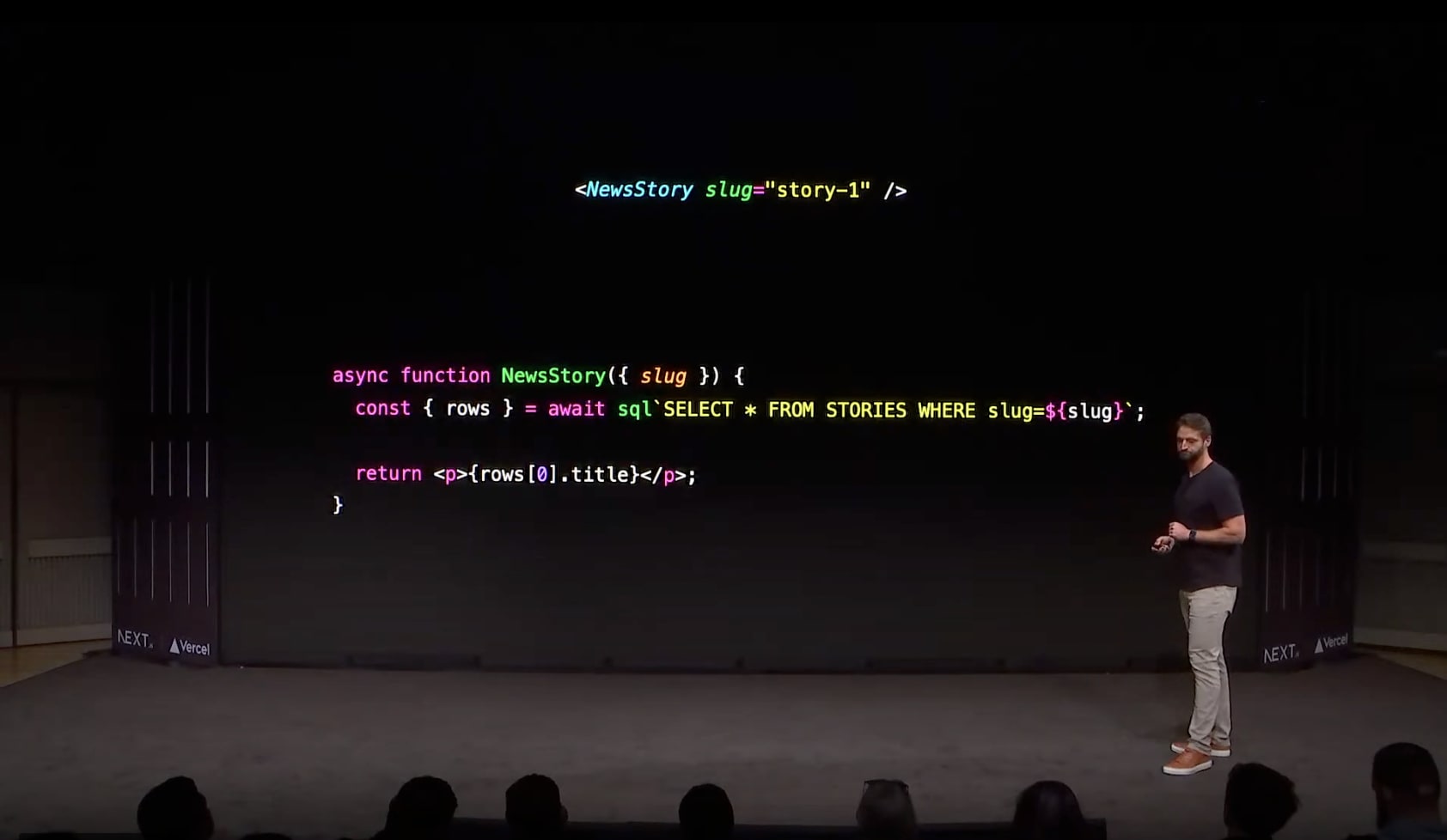Last week, the Next.js Conf took place, where Server Actions were introduced as a stable feature. During this presentation, an example caused quite a stir in the community.
Many people criticized or mocked this approach, claiming that this example represents a serious SQL injection vulnerability. The purpose of this article is to demonstrate that this approach is safe and does not cause SQL injection.
What is SQL Injection?
An SQL Injection attack consists of passing a malicious query to be executed on your database. This query can alter or even delete your data.
Here’s an example:
const { rows } = await client.query(
`SELECT * from USERS where user_id='${params.userId}'`
);This query is vulnerable to an SQL Injection attack because the user input is inserted directly into the SQL query without any validation.
For example, if we pass the following code as a parameter in userID: "'; DROP TABLE USERS; --"; the query that would be executed would look like this:
SELECT * from USERS where user_id=''; DROP TABLE USERS; --'Resulting in the deletion of our users table.
To avoid this, we should use parameterized queries:
client.query(query, [parameter])The client.query() function takes two parameters: the first is our SQL query, and the second is an array of our parameters, like this:
postgres.query("SELECT * from USERS where user_id = $1", [params.user_id])This way, PostgreSQL takes care of validating our parameters, ensuring our safety against SQL injection attacks.
However, how does writing SQL followed by template strings
as demonstrated in the Next.js Conf not become vulnerable? The reason is that a template string was used
combined with a tag function.
How do Tag Functions Work?
Tag functions are functions that modify the output of our template string. Let’s look at an example:
let name = "Juliano"
function greeting(strings, name) {
console.log(strings) // []
return `Hello, ${name}`
}
greeting`${name}` // "Hello, Juliano"Here, the string Hello was added by our function. Another example of a tag function that many of us have used is writing CSS with styled-components.
Now that we’ve briefly seen how tag functions work, let’s demonstrate how the sql function from the package @vercel-postgres
utilizes the same concept.
See the example below:
// custom tag function
export function sqlTemplate(strings, ...values) {
// This ensures that the function is called correctly
if (!isTemplateStringsArray(strings) || !Array.isArray(values)) {
throw new VercelPostgresError(
'incorrect_tagged_template_call',
"It looks like you tried to call `sql` as a function. Make sure to use it as a tagged template.\n\tExample: sql`SELECT * FROM users`, not sql('SELECT * FROM users')",
);
}
let result = strings[0] ?? '';
for (let i = 1; i < strings.length; i++) {
result += `$${i}${strings[i] ?? ''}`;
}
return [result, values]; // returns the template literal and the values to be interpolated as an array.
}
// the `sql` function uses the `sqlTemplate` function. This returns a parameterized query, which is protected against SQL injection attacks.
async function sql(strings, ...values) {
const [query, params] = sqlTemplate(strings, ...values);
return this.query(query, params);
}The first function sqlTemplate returns two items: the query and the parameters that will be used for it. This function is
used within the sql function, which executes the query following the parameterized query approach, preventing
SQL injection attacks.
Conclusion
As we saw above, the example presented at the Next.js Conf is safe and does not cause SQL injection, as the sql function uses a concept called tag functions, which modifies the output of template strings.
Internally, the sql function formats the strings passed as parameters and executes client.query() using parameterized queries, making it completely safe against SQL injection.
There is also another discussion in the community about whether we should mix back-end concepts with front-end ones, but I believe that is content for another article.
See you later, and thanks for all the fish.
